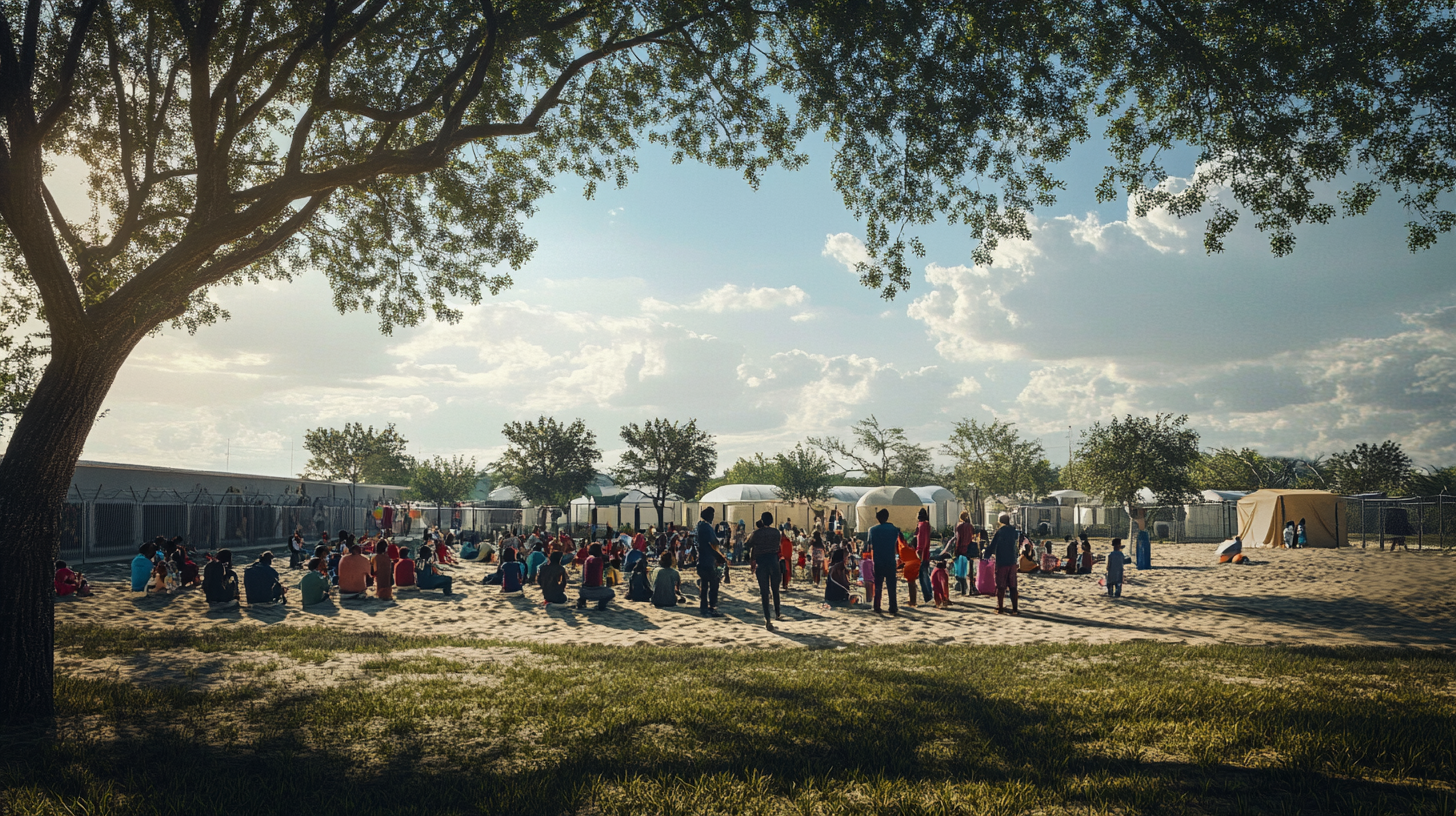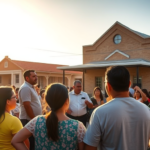Border Shelters Eased Migrant Surges, Face Uncertainty Under Trump
As migrant surges have increasingly pressured border communities, shelters in the Rio Grande Valley (RGV) have played a crucial role in providing much-needed relief. However, these shelters may soon find themselves under siege, owing to potential policy shifts anticipated under the Trump administration. Given the vital role these shelters play, Valley residents could experience significant impacts if these facilities are targeted.
Shelters as Lifelines in Managing Migrant Influx
Border shelters along the U.S.-Mexico boundary, particularly in South Texas, have been indispensable during times of heightened migrant activity. Facilities like Catholic Charities of the Rio Grande Valley in McAllen have offered shelter, meals, and guidance to migrants, such as the Sequera family from Venezuela, who have benefited from the compassionate services provided by these establishments. These shelters bridge the gap for many, offering support ranging from the basics—like a place to sleep—to legal assistance crucial for migrants as they navigate the complexities of immigration procedures.
“Without the help from shelters, many families would feel lost and unsupported during their critical first days in the U.S.,” says Sister Norma Pimentel, an advocate within the community renowned for her humanitarian efforts. Her comments underscore the shelters’ critical local impact, providing relief not just to migrants but also to the communities absorbing these sudden population spikes.
Concerns Over Policy Changes and Increased Scrutiny
As the Trump administration prepares to implement a rigorous immigration policy, possibly including investigations into and impositions on non-profit operations, there is growing concern over the future of these shelters. Tom Homan, Trump’s incoming border czar, has addressed the potential review of these shelters’ roles, aligning their operations with what he labels as contributing to the “humanitarian crisis” at the U.S. border. These organizations, many of which are nonprofits dependent on federal funding, may find their operations scrutinized and their resources limited.
This increased scrutiny resonates with many Valley residents, creating anxiety within communities already burdened by economic and logistical challenges associated with a sudden influx of migrants. “Our community can’t shoulder the entire load,” McAllen’s Mayor Javier Villalobos has argued. He stresses the crucial support that congregational and community organizations provide, compensating for gaps in federal assistance.
Ongoing Legal Battles and Advocacy Efforts
In the current climate, the Texas government’s consistent investigations into the functioning of migrant shelters have met their considerable share of legal pushback. Legal entities such as the Texas Civil Rights Project have played defensive roles, aiding shelters in navigating audits and inquiries, and articulating their humanitarian missions in court. Thus far, most lawsuits against shelters have been rejected, although some remain under appeal.
Rochelle Garza, President of the Texas Civil Rights Project, warned of what she describes as potential assaults on civil rights organizations dedicated to responding to dire situations: “What we see are essential lines of support, responding to emergencies that towns and federal systems aren’t equipped to handle.”
Implications for the Valley Community
For Valley communities, these developments carry both immediate and long-term implications. In a social landscape where residents share deep ties with Latin American cultures and histories, threats to the operation of shelters could exacerbate economic struggles and incite social unrest. Community members worry about both humanitarian implications and economic strain, further emphasizing how dependent communities are on the balanced functioning of these organizations.
Moreover, these shelters act as vital avenues for legal and social advancement for migrants who transition through the Valley. By assisting migrants through complicated legal processes, shelters play a supportive role in their quest for employment and integration. Any cessation or disruption of this support could lead to increased illegal activity borne out of desperation rather than malice.
Community Tensions and Potential Resolutions
Acknowledging the fine line between policy, public interest, and compassion is crucial. Moving forward, communication and collaboration among policymakers, local authorities, and shelters will be essential in creating a sustainable pathway that minimizes adversity. The upcoming weeks will be telling as local advocates and national policymakers continue discussions on what the future holds for these operations.
Furthermore, residents can express their support or concerns at upcoming community forums, where city planners and shelter managers will address ongoing negotiations between government bodies and nonprofit organizations.
Conclusion: Balancing Policy and Local Support
The RGV community finds itself at a pivotal intersection: on one side, policy directives aimed at national security and immigration reform, and on the other, local humanitarian need and care. Balanced, insightful approaches that include the perspectives of South Texas community members will be vital in overcoming these challenges and securing sufficient humanitarian, social, and economic protection for all involved. Continued advocacy and awareness will play imperative roles as the Valley navigates the uncertain waters of new policy directions.
For assistance, concerns, or to offer support to migrant shelters, Valley residents are encouraged to contact officials at Catholic Charities of the Rio Grande Valley, who remain an active frontline participant in these urgent matters.







